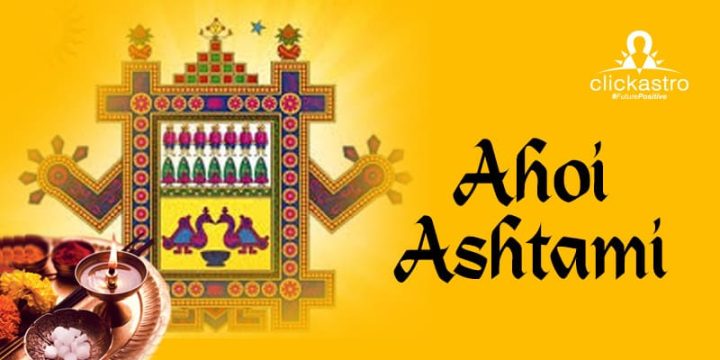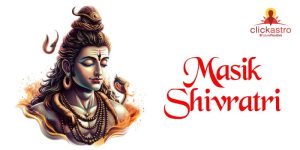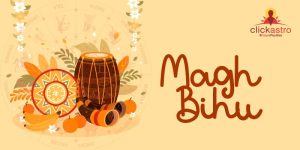Contents[hide]
The date for Ahoi Ashtami 2025 is Monday, 13 October.This festival holds great importance in North India and is celebrated eight days before Diwali and four days after Karwa Chauth.
Date and Rituals of Ahoi Ashtami 2025
In 2025, Ahoi Ashtami will be observed on October 13, Monday. On this day, mothers rise early, take a bath, and observe a strict day-long fast from sunrise until they see the stars or the moon. In some regions, the fast is broken after sighting the stars, while others wait for the moonrise, which occurs late at night on this day. The fast is observed with great devotion to seek the blessings of Ahoi Mata, the deity of fertility and motherhood, for the health and happiness of their children.On Ahoi Ashtami, seek blessings for your family — Discover your Free Horoscope!
Ahoi Ashtami important timings
- Sunrise – October 13, 6:26 AM
- Sunset – October 13, 5:59 PM
- Ashtami Tithi Timings – October 13, 09:54 AM to October 14, 08:39 AM
- Moonrise On Ahoi Ashtami – October 13, 10:29 PM
- Ahoi Ashtami Puja Muhurat – October 13, 06:25 PM to 07:45 PM
The Ahoi Ashtami Vrat Katha
The Ahoi Ashtami fast is deeply rooted in ancient history and highlights the significance of devotion and repentance. The most widely known story associated with this festival revolves around a mother who inadvertently killed a hedgehog cub while digging soil for a well. Unaware of the consequences, she continued with her tasks, only to experience a series of misfortunes affecting her children. Overcome with guilt and grief, the woman realised her actions and fervently prayed to Goddess Ahoi for forgiveness. Her devotion and sincere repentance touched the goddess, who blessed her by ensuring the well-being of her children and restoring happiness and prosperity to her household. Since then, the Ahoi Ashtami fast has been observed by mothers seeking the goddess’s blessings for the protection and long life of their children.
Another popular legend connected to the Ahoi Ashtami fast tells the tale of a moneylender’s wife who, like the first story, accidentally killed a hedgehog cub while gathering mud. Soon after the incident, her seven sons tragically died, one by one, as a result of the curse of the hedgehog. Distraught and desperate, the woman sought advice from an elderly lady in the village. The wise woman suggested that she observe a special fast and worship Ahoi Mata by drawing an image of the hedgehog along with its cubs. The moneylender’s wife did as she was instructed, offering prayers and seeking forgiveness from the divine mother.
Year after year, she observed the fast with dedication, and eventually, her prayers were answered—her seven sons were restored to her. This legend reinforces the power of the Ahoi Ashtami vrat and the belief that it can bring prosperity, restore lost fortunes, and protect one’s children from harm.
Ahoi Ashtami Puja: The Rituals and Practices
The Ahoi Ashtami Puja is observed with deep devotion by mothers, primarily for the well-being of their children. This ritual, typically performed in the evening after sunset, involves gathering materials for worship and preparing an altar dedicated to Ahoi Mata. The first step is either drawing or using an image of Ahoi Mata on the wall. The image, adorned with vermilion, rice grains, and flowers, is central to the puja. In some regions, Ahoi Mata is also referred to as Syau Mata, and she is often shown with a hedgehog and its cubs. These elements are directly tied to the legend associated with the festival, where a mother prays for the well-being of her children after unknowingly harming a hedgehog cub. A significant part of the ritual is placing a karwa, an earthen pot filled with water, in front of the image. The karwa symbolises the well mentioned in the legend of the hedgehog cub and serves as a vital element of the Ahoi Ashtami puja. Mothers offer a variety of sweets, fruits, and special dishes like puri, halwa, and pua to the goddess as part of their devotion. The offerings are later shared with family members, and aarti is performed to conclude the worship, accompanied by songs and prayers dedicated to Ahoi Mata. In some communities, instead of a drawn image, a silver icon of Ahoi Mata, known as Syau, is used for the puja. After worshipping the goddess with milk, roli (red vermilion), and akshata (rice grains), the silver image is woven into a sacred thread, which is then worn around the neck by the women observing the fast. This practice is believed to provide divine protection and blessings for both the mother and her children.Significance of Ahoi Ashtami
Ahoi Ashtami is a significant festival celebrated by mothers for the well-being and prosperity of their children. Traditionally, it is observed by mothers of sons, but in recent times, many mothers also keep the fast for the health and longevity of their daughters. The fast is a symbol of a mother’s unconditional love and devotion to her children, and it is believed that by observing the rituals with sincerity, mothers can protect their children from harm and ensure their long, prosperous lives. The significance of Ahoi Ashtami goes beyond the well-being of existing children. Women who face difficulties in conceiving or who have experienced miscarriages also observe the fast, seeking divine blessings to overcome their challenges and be blessed with children, particularly sons. The festival is deeply rooted in the belief that devotion and sincere prayers to Ahoi Mata, a form of Goddess Parvati, can reverse misfortunes and bring joy and fulfilment into the lives of mothers. Ahoi Mata is depicted as a motherly figure who listens to the prayers of women in distress and grants their wishes, making this day a powerful one for women praying for children or their children’s prosperity. Another important aspect of Ahoi Ashtami is the pilgrimage to sacred places such as the Radha Kund in Mathura. Many couples who are yearning for children take holy dips in the Radha Kund, believing that this ritual will help them conceive. The Radha Kund is considered especially auspicious on this day, and the belief in its powers draws thousands of devotees. The festival, with its combination of fasting, prayer, and pilgrimage, carries profound spiritual significance for mothers and women seeking blessings for their families, making Ahoi Ashtami a revered day in the Hindu calendar.The Fast and Puja Rituals of Ahoi Ashtami
- Morning Rituals: Women wake up early, take a bath, and pledge (Sankalp) to observe a strict fast for the entire day for the welfare of their children. Throughout the day, they abstain from food and water.
- Evening Puja: The puja preparations are completed before sunset. The image of Ahoi Mata is drawn, and a clean space is created for the worship. A karwa is filled with water and placed in front of the deity’s image. The puja is performed collectively by women, and after completing the rituals, they listen to the Ahoi Ashtami vrat katha.
- Offering Arghya to Stars: The fast is broken by offering Arghya (water) to the stars. In some regions, the fast is concluded only after moonrise.
- Cultural Traditions: Special cultural events and gatherings often accompany the puja. Some women wear traditional jewellery, like a Syau (a silver charm) around their necks, which they add to with additional silver pearls every year.
The Myth and Tradition of Ahoi Ashtami
The word “Ahoi” is derived from the phrase ‘Anhoni ko Honi Banana’, which signifies the divine power to turn misfortune into fortune. This concept lies at the heart of the Ahoi Ashtami festival, a day of fasting and prayer observed by mothers for the well-being and longevity of their children. The festival is rooted in deep devotion, with mothers worshipping Ahoi Mata, a revered form of Goddess Parvati, to seek her blessings for the protection, prosperity, and happiness of their children. The fast is considered highly significant, as it symbolises a mother’s unconditional love, care, and hope for divine protection over her family. The popular legend associated with Ahoi Ashtami speaks of a woman who unintentionally killed a hedgehog cub while digging soil for a well. The innocent act resulted in her losing her sons, which was then reversed after the woman turned to Ahoi Mata in deep repentance and prayer. This legend serves as the foundation for the Ahoi Ashtami tradition. It highlights the power of genuine repentance, love, and unwavering faith in the divine. By observing the fast and performing the associated rituals, mothers believe that they can protect their children from harm and ensure their healthy, prosperous lives. The festival thus continues to be an important event for families, especially mothers, as they pray for the long life and welfare of their children with the blessings of Ahoi Mata.Essential Rules of Observing Ahoi Ashtami
- The fast is to be observed without consuming water.
- The Arghya should not be offered in a bronze container.
- Offerings are made to the stars at night, completing the fast.
- A karwa used during Karwa Chauth is also used during Ahoi Ashtami.
- Mothers observing the fast should not scold or harm children on this day.
- Non-vegetarian food is strictly prohibited.
- Observers should avoid sharp objects, needlework, and household chores like sweeping and mopping.
- The fast is considered fruitful if mothers remain awake and prayerful throughout the day.







